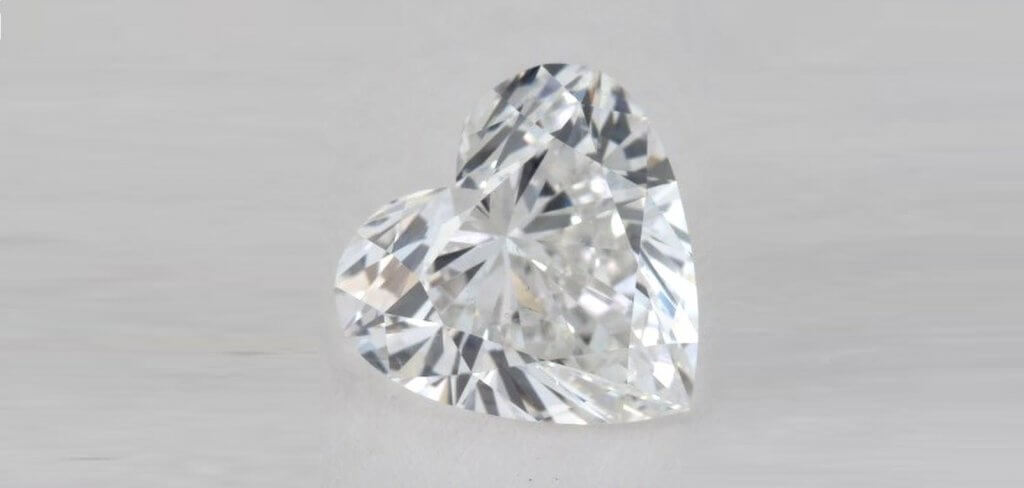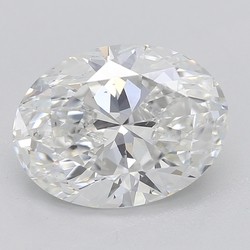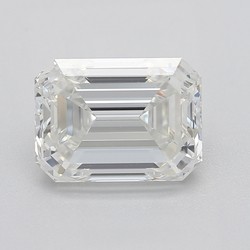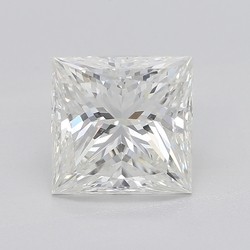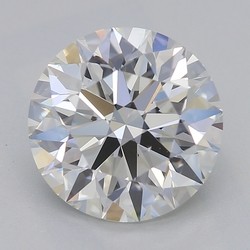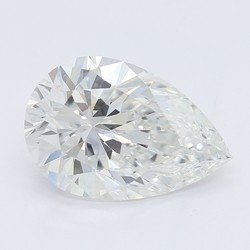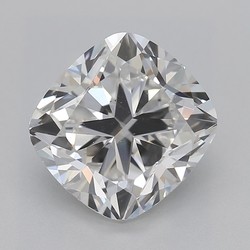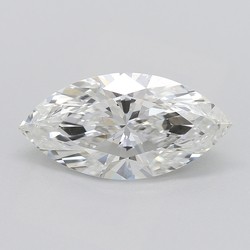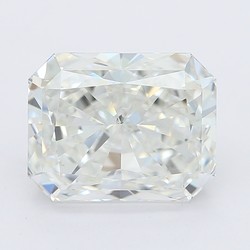Princess Cut or Cushion Cut Diamonds: Which is the Best Choice for You?
Key Takeaways
- The Princess and Cushion are two of the most luxurious shapes out there. From their names to their distinctive facet patterns, they’re pretty hard to resist – even for the most resolute shopper.
- As modified brilliants, both of these shapes are excellent at producing fire and brilliance. Sure, they won’t sparkle as much as the Round Brilliant, but they’re about as close as it gets.
- If you want a little more versatility with the ring’s design, the Cushion may be the better choice, since the Princess requires a more ‘protective’ design that doesn’t leave its four corners exposed to damage.
- But, if you’re unbothered by that, the Princess’s unique facet pattern is hard to say no to.
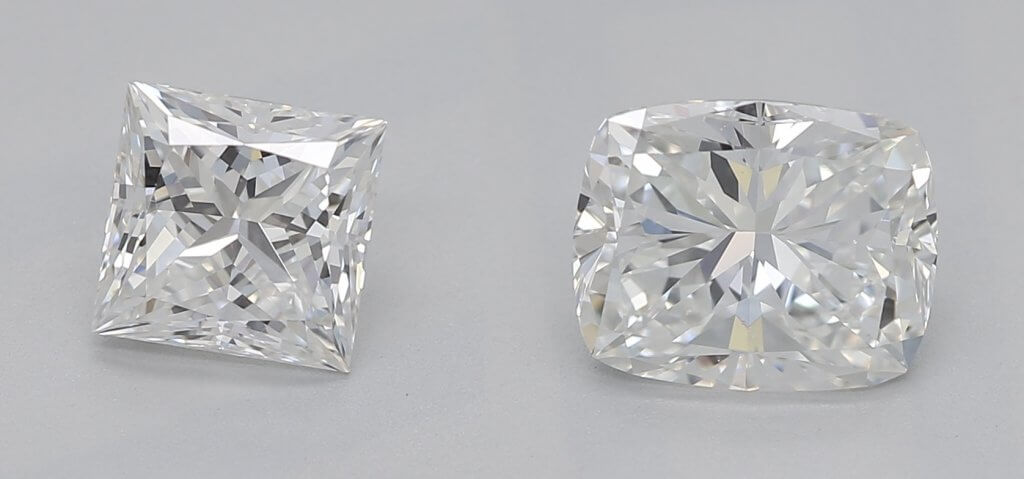
There’s something indescribably elegant about a square-shaped diamond. Sure, the Round Brilliant has got us going starry-eyed us much as the next person, but the beautiful light performances and facet patterns you will find in the more angular diamond shapes are undeniable showstoppers for any engagement ring.
After all, beyond the fire and brilliance and scintillation of any ring ever made, there’s a lot to love about the silhouette. The straight, bold lines and sharp points of Princess diamonds are strong enough to transform even the simplest solitaire ring design, while the plush, soft curves of the Cushion cut are perfect for updating classic silhouettes without straying too far from the original.
As you can see, the two shapes produce totally different effects in a ring – but which one is best for you?
Sparkle
The Princess cut has one of the most distinctive light performances, created by a combination of its brilliant facet structure, greater depth (when compared with some of the shallower shapes), and two to four chevrons located on the pavilion. Its large table offers a good view of the unique, geometric pattern created within the diamond, and its ability to produce a good amount of fire and brilliance make it a beautiful and arresting shape for any ring.
The Cushion is a little closer to the Round Brilliant in terms of shape, although it produces less brilliance and a little more fire. For some people, the cut’s vibrancy makes it a clear winner; for others, the lack of brilliance (when compared with the Round Brilliant) makes it a ‘second best’ option.
Then again, Princess cuts also lack the levels of sparkle found with the Round Brilliant, so the chances are that you’re already okay with missing out on a little brilliance.
Best choice for sparkle: both options offer great light performances, and it really comes down to your own preference for that reason. The Princess is brighter, while the Cushion offers a great display of colorful light.
Versatility
The Cushion is a highly versatile shape. While the majority of Cushion diamonds produced are square (or close to square) in proportion, elongated Cushions represent a slightly more unique alternative – if you can track one down. It’s a strong and sturdy shape, although, as we’ve mentioned before, its rounded edges can make it appear a little less defined than the Cushion, Radiant, and Emerald.
The Princess’s versatility is limited by one major ‘weak spot’ – or, more accurately, four weak spots. Unlike the rounded corners of the Cushion, the Princess’s corners are cut to pretty sharp points. This is part of what makes it appear so modern and elegant – and so distinctive from other shapes – but it’s also a vulnerability that ought to be addressed if the diamond in question is going to be work regularly.
While diamond is incredibly durable, even against everyday wear and tear, fine tips still represent a risk. This is why, historically, culets were cut into the bottom of the pavilion (although, these days, jewelers can safely mount diamonds without a culet) – because even a small chip can ruin the stone’s appearance.
So, for the Princess cut, ring settings that protect these four corners are the wisest option. Prongs placed at each corner will offer a good level of protection – or, alternatively, a bezel or halo – but that doesn’t always appeal to shoppers.
Another thing to note is that you should only consider Princesses that fit square (or squarish) proportions. Rectangular Princesses, unlike elongated Cushions, are widely regarded as inferior, due to their restricted sparkle. This isn’t a big deal, since most shoppers are drawn to the Princess because of its shape, but it’s something to note.
Best choice for versatility: the Cushion, since it’s considerably less vulnerable and available in square or rectangular proportions.
Size (Face-Up Appearance)
Elongated diamonds tend to look larger than square or round diamonds of the same carat, since more of their weight is distributed across the crown and table than it is in the lower portion of the diamond. Their ideal proportions are naturally shallower, which lends them the illusion of being heavier than their counterparts. This is why the Oval appears larger than the Round, for instance.
In other words, neither the Cushion nor the Princess looks particularly large for its carat weight.
At the same time, the Princess cut isn’t among the smallest, either. Its large table, brightness, and clearly defined shape mean that it appears larger than some other shapes. The diagonal measurement of a Princess is larger than the diameter of a Round Brilliant (when both are the same carat weight, and cut to ideal proportions), but its individual sides are a little smaller, so there’s not a major difference.
By comparison, the Cushion tends to look a little smaller than the Princess but remember that prong placement can make a difference. If the prongs are concealing the corners of the Princess, the minor size difference between that diamond and a Cushion cut of the same weight will be negligible. The Cushion’s gently curving edges mean that, even if the prongs are placed at the corners, it won’t lose too much of the impression of size.
Best choice for size: the Princess if you’re just looking at the diamonds, but the Cushion may come out on top once the two diamonds are set within a ring. Either way, it’s a minor difference.
Cost
Both shapes are significantly more affordable for the Round Brilliant, but for very different reasons.
The Princess enjoys a low cost as a direct result of the economics of the cut – it wastes very little rough diamond, meaning cutters can get the most valuable yield from the stone.
Since the Princess’s shape resembles an inverted pyramid, and many rough diamonds feature an octahedron shape (a little like two pyramids placed base-to-base) it’s not hard to get two impressively sized Princess cuts from a rough stone that would otherwise yield one larger Round Brilliant, and a considerable amount of wastage (used to cut melee diamonds, which are worth considerably less).
In fact, Princess cuts are among the cheapest cuts you can find, which means it’s very likely you’ll wind up with a larger Princess diamond than you would if you opted for the Round Brilliant.
The Cushion is a similar story. In fact, there’s no significant difference between the Princess and the Cushion, and buyers who are stuck on the fence between these two cuts are unlikely to be swayed one way of the other on the matter of price alone.
Best choice for cost: both. You’ll find a noticeable difference in price if you’ve been browsing the Round Brilliant, and be able to raise your expectations for carat weight – a priority for a lot of shoppers.
Color
We’ve talked before about how the Cushion is good at retaining color – and, as a result, bad at concealing it. If you’re looking at Fancy Color diamonds in blue, green, yellow, etc., then the Cushion is a great choice, and will shine with a real vibrancy. If, however, you pick a diamond with traces of yellow – traces that may not be noticeable in some cuts – the Cushion is likely to reveal it.
This is partly because of its depth, but also because of its larger facets and table.
Princess cuts are very similar to Cushions in that respect. They also feature a larger, more open table and, depending on the size of your diamond, may show their color grade a lot more ‘truthfully’ than, say, the Round Brilliant.
In both cases, you need to be cautious when it comes to color, but you don’t need to jump to extremes. An H or I color Princess or Cushion will offer good value for money, and plenty of options that don’t appear yellow to the naked eye. Some diamonds will be exceptions to the rule, which is why you shouldn’t ever consider buying a diamond without first seeing it in person. For one thing, pictures and video (not to mention your computer monitor) aren’t always great at conveying the subtle nuances between two diamonds – for another, a diamond’s light performance can sometimes help to mask color.
Color that seems like a big deal on screen may not be such a big deal in real life, and, at the same time, color that seems ideal on screen may disappoint when you finally get that diamond in your hands.
Best choice for color: again, both. The Cushion and the Princess diamonds will each require a very similar color grade and are each as guilty of showing their true colors more than some of the other shapes.
Clarity
Since both cuts feature a brilliant facet pattern, they are a lot more effective at masking slight inclusions than, say, the Emerald cut or Asscher. The flashes of brilliance and fire, and the many facets, do a great job at supporting eye cleanliness, although the Cushion is definitely weaker than the Princess in this respect.
In Princess cut diamonds, cutters often prioritize cutting the stone so that inclusions don’t fall within the table, since this is by far the most significant ‘window’ into the diamond. It’s important to pay attention to the location of any major inclusions, however, as they can weaken the already-vulnerable corners and make them even more susceptible to breaking. This is easily avoided if you study the diamond’s GIA report carefully and confer with your jeweler.
As we’ve mentioned before, the Cushion is definitely not one of the best cuts for hiding inclusions – although it’s not the worst, either. The larger facets, combined with a large table, mean there are more opportunities for an inclusion to stand out.
As with color, the only effective way of ensuring you’re not investing thousands of dollars into a diamond with visible inclusions is to see it in person and verify with your own eyes that it is eye clean. You can’t simply pick out a single clarity grade and shop from that, since every diamond (and every inclusion) is totally different – another reason shopping online is such a big risk.
Best choice for clarity: the Princess cut, although, in both instances, it’s easy to find an eye clean diamond at a great value.
Our Summary
The Cushion and the Princess are two strong shapes, each conveying a totally different vibe – and appealing to totally different styles. The Princess is more modern; it’s edgy, unique, and very feminine, and features a profile that is the polar opposite of the Round Brilliant.
The Cushion is a sort of middle ground between the Princess and the Round. While it is square, it is also curved. It’s also a lot less modern, being a ‘descendent’ of the old mine cut made popular in the 18th and 19th centuries.
In many ways, the two cuts offer a lot of the same benefits, which means that the unique impressions they make when worn on the finger should be the true decider. That doesn’t necessarily make the choice any easier, but at least you know you’ll end up with a beautiful center stone, whichever shape you settle on.
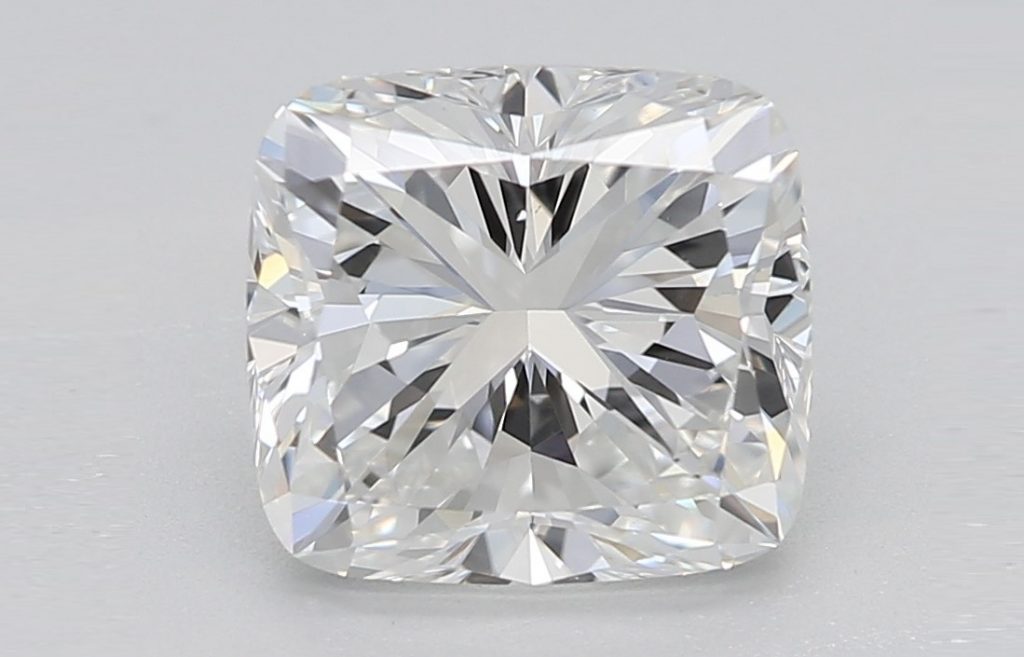
May 11, 2021 By Willyou.net
Cushion Cut Diamonds: The Ultimate Symbol of Brilliance and Elegance

Aug 8, 2022 By Willyou.net
Oval vs. Cushion vs. Elongated Cushion Diamonds: Which One is Right for You?
